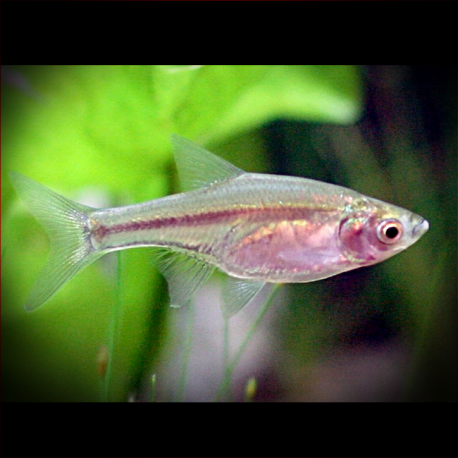More info
Datasheet
| Minimum Tank Size | 80 litres / 21.13 US gallons |
| Maximum Size | 4.0cm / 1.57inches |
| Temperature | 18°C / 64.40°F - 28°C / 82.40°F |
| Hardness | 2.02dgH / 36ppm - 12.05dgH / 215ppm |
| pH | 6.0-8.0 |
General Description
The Amblypharyngodon Chulabhornae, a member of the Cyprinidae family, is a species that is relatively rare in the aquarium trade. It can be identified by specific characteristics such as the number of scales in the lateral row and the incomplete lateral line with perforated scales. This fish lacks barbels and belongs to the genus Amblypharyngodon. It typically grows up to a size of 4.0cm in captivity and prefers a densely planted aquarium setup.
Aquarium Setup
When setting up an aquarium for the Amblypharyngodon Chulabhornae, it is recommended to maintain a densely planted environment with the addition of surface vegetation for a natural feel. Filtration should not be too strong, as these fish are accustomed to sluggish waters. The water conditions should be monitored closely, with a pH level between 6.0-8.0, hardness of 36-215ppm, and a temperature range of 18-28°C. The minimum tank size required is 80 liters to accommodate the schooling nature of these fish.
Behaviour
Known for its peaceful nature, the Amblypharyngodon Chulabhornae is compatible with a variety of other fish species in a community tank. These fish exhibit schooling behavior and should ideally be kept in groups of 8-10 individuals. Maintaining a decent number of specimens not only reduces their nervousness but also enhances the overall aesthetic appeal of the tank.
Feeding and Diet
In their natural habitat, these fish predominantly feed on small invertebrates, algae, and zooplankton. In an aquarium setting, they are likely to accept dried foods but should also be offered small live or frozen fare such as Daphnia and Artemia. Providing a varied diet will help ensure their nutritional needs are met.
Reproduction & Dimorphism
The reproductive behavior of the Amblypharyngodon Chulabhornae has not been extensively documented, but it is believed to be an egg-scatterer without any post-spawning brood care. Mature females can be distinguished by their rounder belly and slightly larger size compared to males.
Habitat and Distribution
These fish are commonly found in wetlands and marginal areas with slow water movement, often near abundant aquatic vegetation. They may also inhabit artificial habitats like irrigation canals or rice fields. The Amblypharyngodon Chulabhornae is distributed across Thailand, including the Maeklong and Chao Phraya drainages, as well as parts of Laos, Vietnam, and Cambodia.

